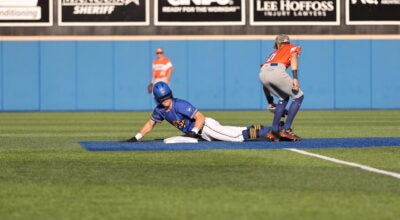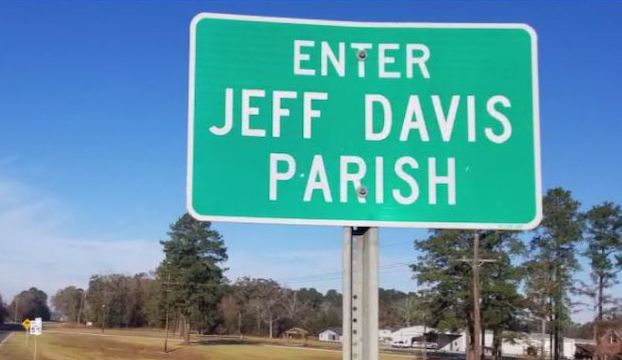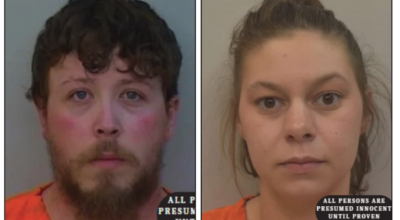La. abuzz with drone business
Published 7:44 am Monday, November 17, 2014
BATON ROUGE — To Paul Charbonnet, co-owner of Baton Rouge-based Atmosphere Aerial, drones represent freedom, the filmmaker’s creativity loosed, camera views and angles restricted only by imagination. The bird’s-eye view writ large.
“The unlimitedness of the shot is just incredible,” Charbonnet said.
The devices can fly closer to buildings or actors than a helicopter and at a fraction of the $10,000 daily rate for a helicopter.
Atmosphere Aerial is one of a growing number of firms the technology has launched. A search for “aerial” in the Louisiana secretary of state’s website turns up at least 10 drone companies, most started in the last year or two.
The Federal Aviation Administration estimates about 7,500 small drones may be in commercial use by 2018. It’s unclear how many people are already flying the devices just for fun. DIYDrones, an online community for hobbyists, has close to 59,000 members.
In Louisiana, the technology will generate an estimated economic impact of $213 million from 2015 to 2017, generating 1,097 jobs and tax revenue of $1.44 million, according to the Association for Unmanned Vehicle Systems International. The association prefers that drones be called unmanned aircraft systems.
An association study shows the devices will have a U.S. economic impact of $13.6 billion over their first three years of integration into the National Airspace System, which controls the country’s air traffic. The economic impact would swell to more than $140 billion over the next 10 years.
“We’re talking about a plethora of applications, whether it starts with Arctic research, firefighting, flood monitoring, crop dusting, mining, farming, aerial photography, real estate, storm research, advanced security, port security, cargo, search and rescue, volcanic research or pipeline monitoring,” said Mario Mairena Sr., senior government relations manager for the association. “The list goes on and on.”
The biggest market will be “precision agriculture.” The term covers remote sensing, such as scanning plants for health problems and water needs, and precision application, spraying pesticides or nutrients more efficiently and selectively.
Mairena said the United States lags far behind other countries when it comes to commercial uses for drones.
Yamaha Motor Corp.’s RMAX, a 9-foot-long remotely-operated helicopter, has been used to spray crops in Japan for more than 20 years. The copters fly slowly, 12 miles per hour or less, and no higher than 20 feet off the ground.
Integrating these and other devices into the National Airspace System will immediately result in an $11 billion economic impact in the U.S. agriculture industry, and $66 billion over the next decade, according to AUVSI. But that influence won’t happen until the FAA comes up with the regulations that govern drone use.
“Where we are now is there really aren’t any specific rules written for this technology in agriculture,” said Rogers Leonard, associate vice chancellor for the LSU AgCenter.
The FAA really only has two categories for aircraft: the remote-controlled devices that people fly as a hobby or commercial aircraft, like 747s. Drones don’t belong under either heading.
The agency is writing regulations for drones weighing less than 55 pounds. The proposed rules are due this month, with the final version set for late 2015. The FAA’s current regulations don’t allow unmanned aircraft to be used for commercial purposes, although lots of filmmakers and others already do.
Leonard said using a drone doesn’t necessarily mean a tremendous reduction in the amount of pesticide or fertilizer a farmer uses, but it will take out the guesswork. Farmers will be able to examine the crops and spray them at exactly the right time.
Being able to monitor the fields without having to go through them and take samples or drive around a field’s perimeter would be a tremendous benefit, Leonard said.
But the FAA prohibits flying model aircraft for payment or commercial purposes. Right now, farmers can’t legally fly a drone over their fields to check if crops are being irrigated properly or to check for weed or insect problems.
Mairena said those limitations are costing the U.S. economy $10 billion a year. That’s $27.6 million a day.
Jon Purvis, owner of Fly Cam Aerial Cinematography in Metairie, said the current regulations make little sense.
The FAA says it’s OK to fly a drone as long as a company doesn’t charge for the service, he said.
FAA spokesman Les Dorr said the agency’s preferred approach is education.
Typically that means an informal call or visit to explain the regulations, he said. The agency hasn’t assessed civil penalties for commercial operations, only for “careless and reckless” flying.
“To me it’s a gray area that most people are just ignoring . Everybody’s doing it,” Purvis said.
A lot of motion picture companies have been scared away by the FAA drone regulations because the companies don’t want to get into any trouble, Purvis said. The reluctance to cross the FAA has somewhat limited Fly Cam’s opportunities.
However, the FAA recently signaled it may be willing to relax the regulations for commercial drones. In September, the agency gave exemptions to six filmmakers. Since then, dozens of other companies have applied. State Farm wants to use the devices to inspect policyholders’ roofs. Chevron USA wants to monitor oil and gas fields, platforms and refineries.
Purvis plans to apply for an exemption as well.
Phinizy Percy Jr., of Phin Percy Films in New Orleans, said the process could be as simple as getting a driver’s license.
A Louisiana Legislature-created study group has asked the FAA to let states regulate the devices along the same lines as crop dusters.
Crop dusters have to meet FAA rules for their planes’ airworthiness, Leonard said. But all the oversight after that is done at the state level through the Department of Agriculture and Forestry.
—
Information from: The Advocate, http://theadvocate.com
Travis Spradling





